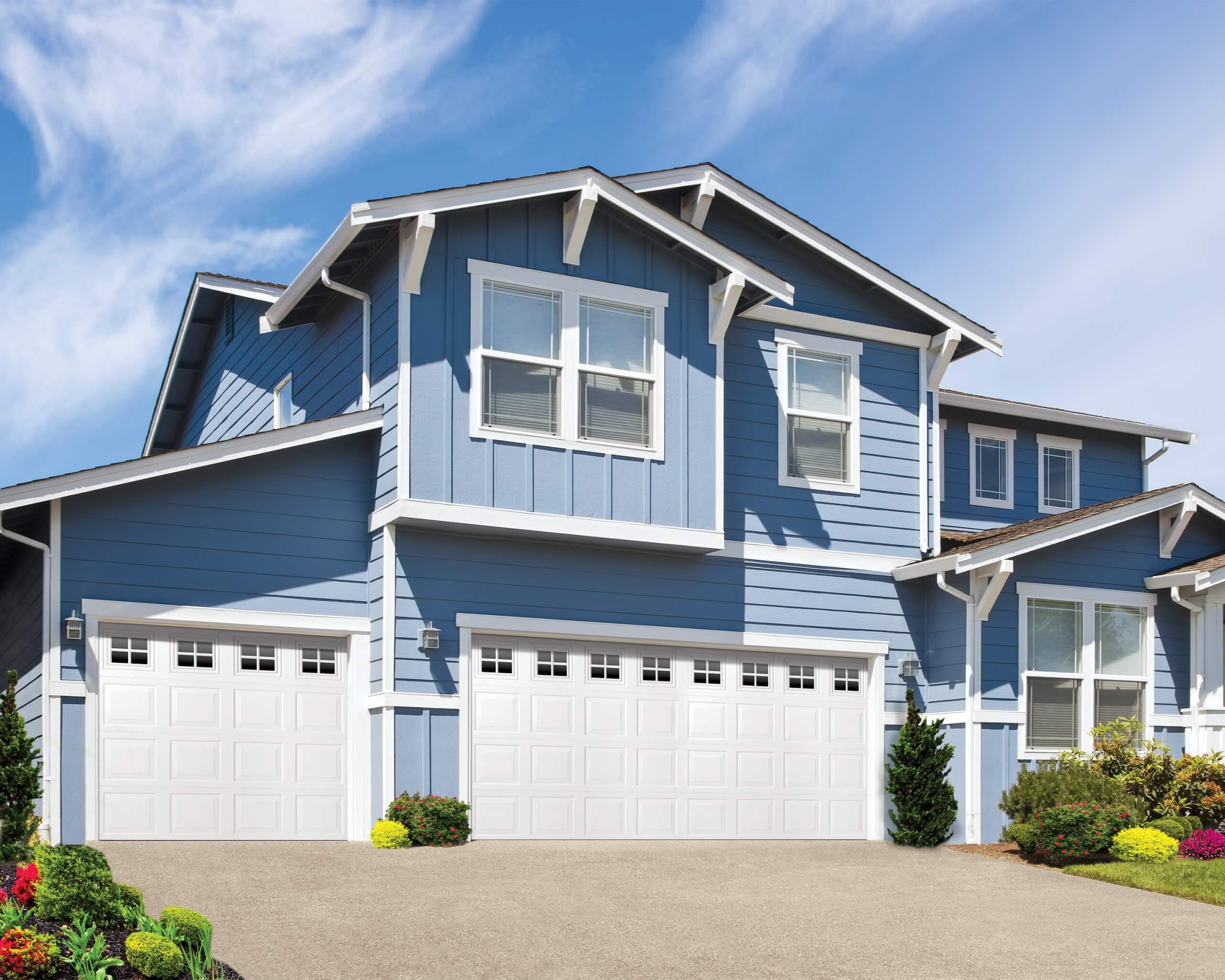Today, garage doors bring a blending of aesthetics and performance. With more than half of single-family homes in Canada having an attached garage, it can represent a significant visual footprint, impacting curb appeal, plus there’s little doubt that it must stand up to a lot, at least in some regions of the country.
Garage doors are being used to provide, “a bit of pop,” says Tony Anderson, Owner of Upwardor Inc. of Milton, Ont. “If you think about how much square footage a garage door takes up on the front of the house, it seems silly to not want to put a little bit more thought and attention into it.”
“From matching the front entry door to doors with clean modern lines or pops of colour… the garage door is being used to set the tone for your home on your street and as you pull into your driveway.”
And, of course, rising energy prices and concerns around environmental sustainability raise an important demand for efficiency.

Photo courtesy of Upwardor Inc.
“Energy efficiency has become a forefront concern for everybody,” says Daryl Laprade, Director of Sales & Business Development at Creative Door Services Ltd. It’s about energy modeling, he suggests, and while a greater concern in commercial properties, it has found its way to residential homes.
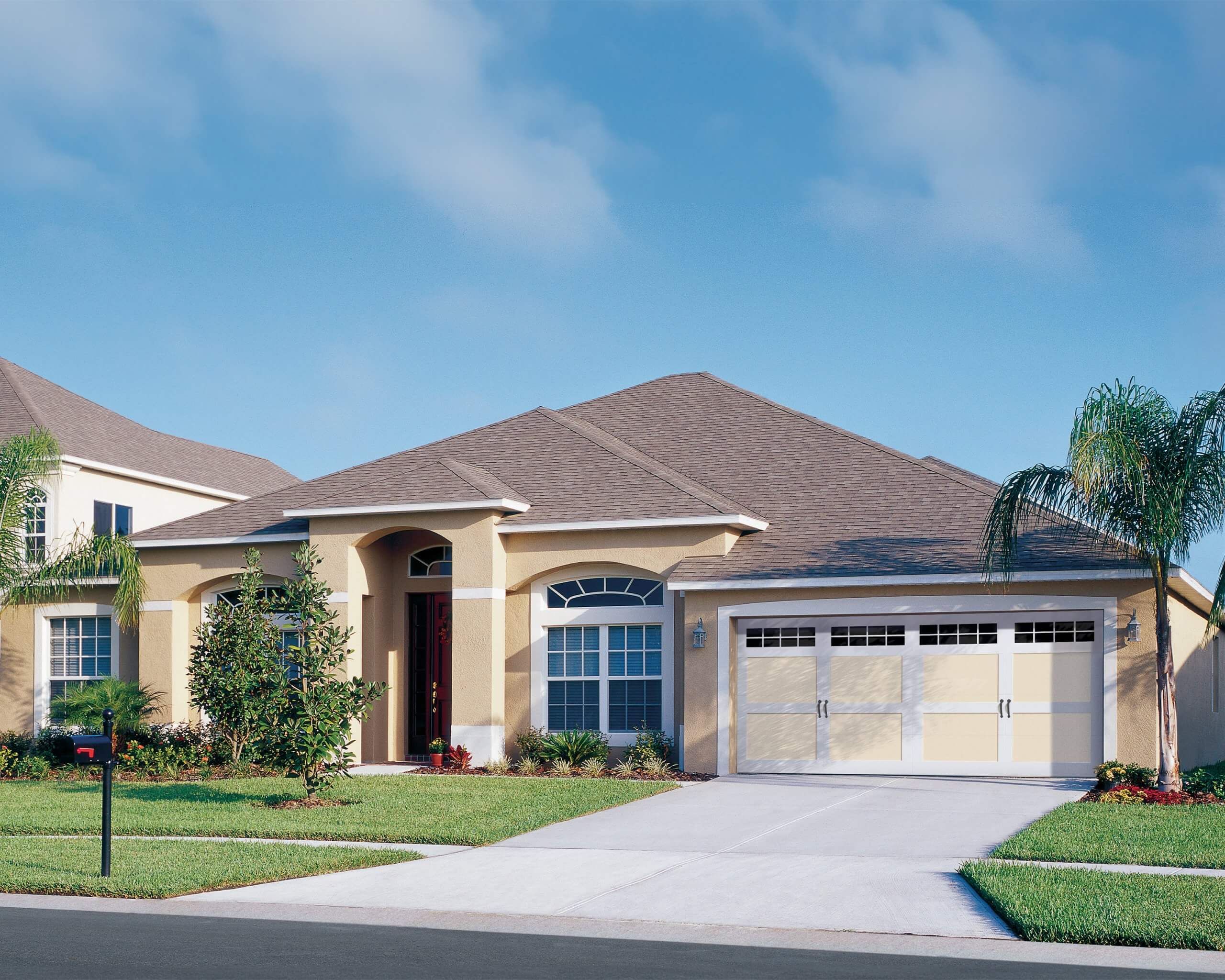
Photo courtesy of Creative Door Services Ltd.
“If you have a pan garage door on the outside of the building, which has no insulation, you’ve got to make up for it everywhere else in the building with more insulation.”
With that, he points out that the higher the R-value garage door going into your carport the better. Laprade notes, however, that the industry is also gradually moving away from the more familiar R-value measure of reduction of heat flow to a U-value measure of heat transfer. (Note: the higher the R-value the better, whereas a lower U-value represents better performance.)
In residential applications, Laprade suggests it’s not uncommon to see insulated garage door products from R-10 up to even as high as R-25. “People that are insulating their garage are also typically heating it; improving the energy footprint of their home,” he adds. He points out that some of that heating can be achieved through solar gain, such as through the use of triple-pane polycarbonate window panels, popular in commercial sectors but gaining traction in homes. In this case, you’re letting the sun in, and with proper insulation keeping the heat from it trapped.

Photo courtesy of Creative Door Services Ltd.
“You’re going to see that change hit the industry, and you’re going to see garage door products hitting the market that are not only more energy efficient but easier to use.”
To that end, Laprade notes that many commercial buildings are moving to direct drive operators for controlling their overhead doors, rather than traditional AC operators. The reason, he says, is the significant reduction of wear and tear on the door hardware.
On the residential side, garage door operators have been steadily moving to DC motors, like those from the Genie brand, away from AC motors for similar reasons. “It’s easier on the door,” Laprade says.

Photo courtesy of Creative Door Services Ltd.
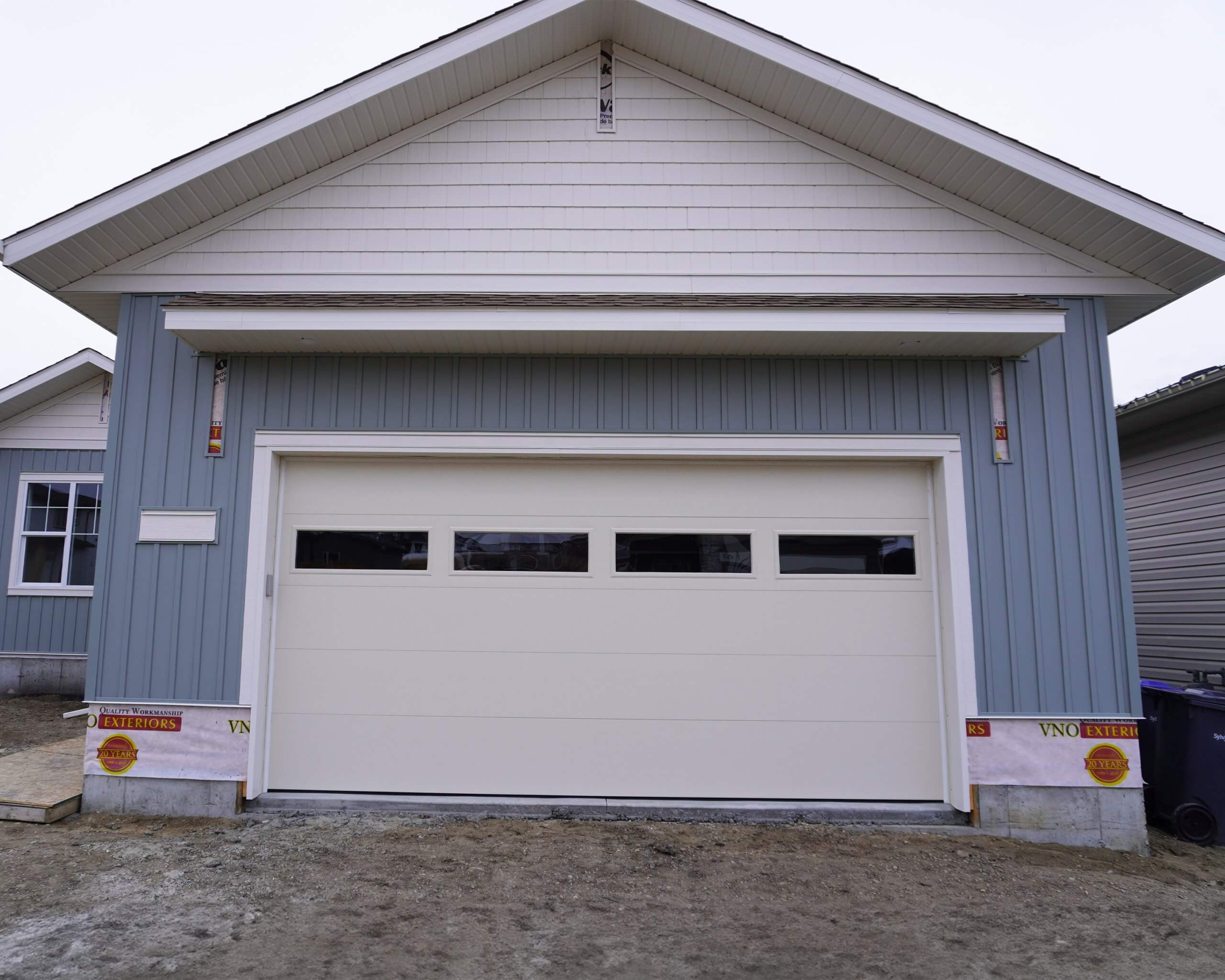
Photo courtesy of Direct Overhead Door Supply

Photo courtesy of Creative Door Services Ltd.
More than a carport
One factor changing the garage door market is, of course, the evolution of the garage in general.
“Garages have been an underutilized space in many homes over the years, being used to store empty paint cans and tools in a haphazard fashion,” Anderson says. “Out of sight, out of mind.”
Today, garages are becoming a seamless extension of the home. Anderson and Melissa Scocco, Business Development Manager at Upwardor, say the newest trend is that the value of this underutilized space is being “unlocked” as yoga studios, gyms, and “mancaves.”
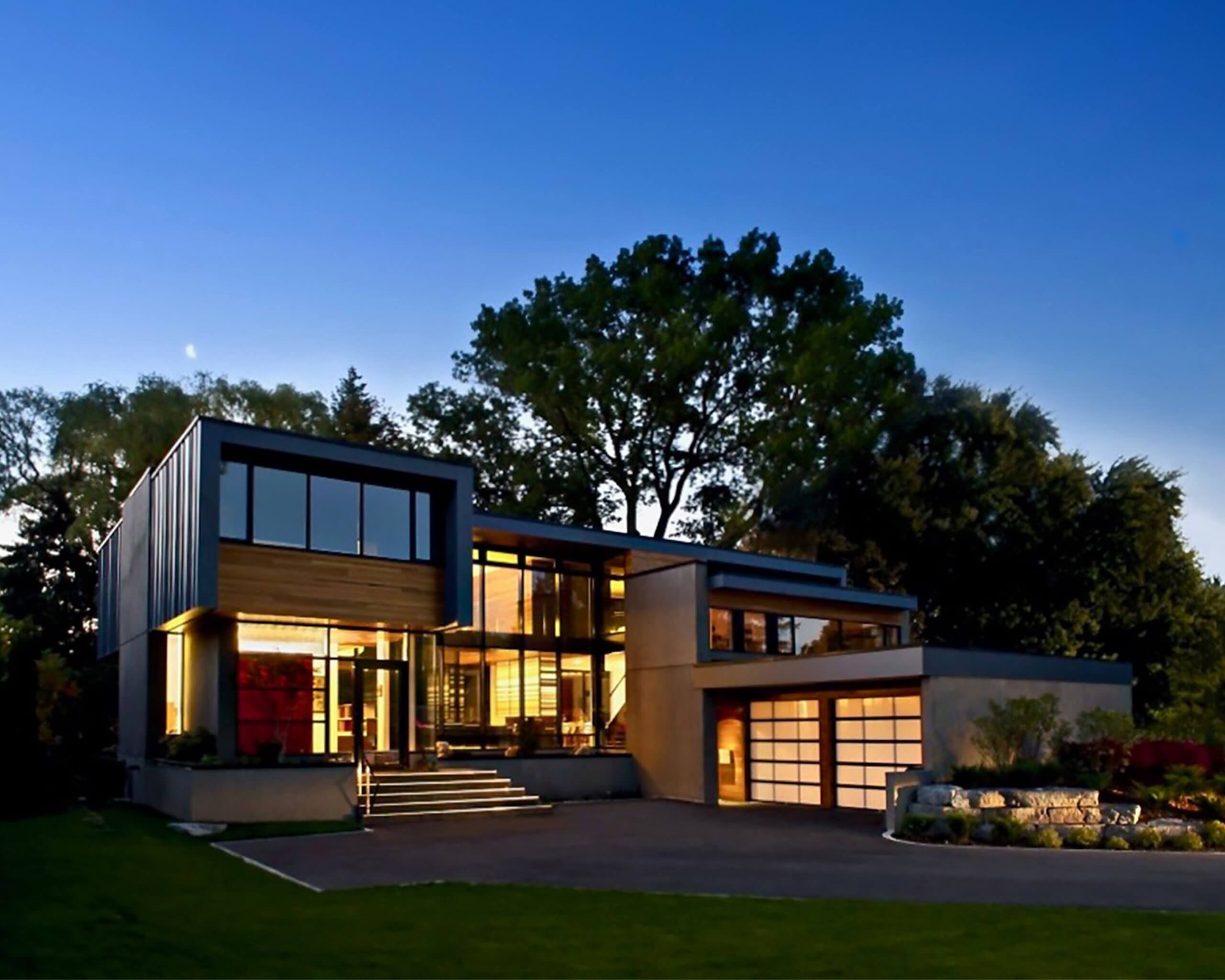
Photo courtesy of Upwardor Inc.
In addition to aesthetics, as garage doors become an extension of the home, the two note that security is even more crucial, as are eco-friendliness and low maintenance.
From a security perspective, Anderson and Scocco recommend choosing a door of steel construction, employing automatic locks, keypads and garage door openers with lights and cameras as ways to protect you and your family.
They suggest a door made with CFC-free polyurethane insulation for temperature control and better air quality. And highlight the low-maintenance qualities of steel or fibreglass doors.
“Annual maintenance, such as painting is a chore nobody really needs to take on,” Anderson says.

Photo courtesy of Direct Overhead Door Supply
Covering the Canadian climate
Canadians get hit with a lot of inclement weather from region to region and, due to climate change, has sometimes made the shift from inclement to extreme.
That’s one of the reasons that one of the newer wholesale distributors of overhead doors, Direct Overhead Door Supply of Central Alberta, has put a lot of work into performance and testing.
It has paid off well, according to its owner Ben DeRegt. In the years since it’s begun operating, DeRegt is proud to claim there have been no callbacks on his company’s panels.
“Everybody tells me their doors can handle Alberta climate, but that doesn’t always mean their doors can actually handle Alberta climate.”
DeRegt boasts his doors are equipped to handle some of the harshest climates: the Canadian Prairies.

Photo courtesy of Direct Overhead Door Supply
They do so, he notes, through a combination of heavy insulation, weather tightness, durability and rust prevention.
All his company’s doors are 2” thick with R-17.1 and use a three-layered construction technique for enhanced strength and durability. The door panels have a thermal break to further prevent heat transfer and a rubber gasket inside the tongue and grove to provide a seal, “We find it crucial in our climates.”
As others have, he notes that energy efficiency is getting increasingly complex and that with the proper seals and thermal break an R-17 door, as a system, out-performs a wall assembly with that of a standard 16” OC (on-center) wall assembly with R-22 batt insulation.
“R-value is only half the equation; the other half is air containment, that’s where the tongue and groove design and the bulb seal come into play.”
Meeting that requirement of local resilience and sustainability is a significant part of why DeRegt says Direct Overhead Door Supply was extremely methodical and took its time — more than 4 years — to introduce its product to the market with a rigorous pilot program with a local installer.

Photo courtesy of Direct Overhead Door Supply
The impetus for launching the company wasn’t simply around meeting those performance needs, but challenges being faced around supply.
“We got into the overhead door business because, over the last three or four years, lead times on overhead doors became almost unrealistic (sometimes up to 8-36 weeks)” he says. “Most of that has been corrected now, but we can still offer a better, more personalized service without compromising quality.”
The company’s recipe for success, DeRegt suggests, is being set up to build and supply overhead doors to its retail and contractor customers with a one-week turnaround time. After a rigorous pilot program and a high need for quality doors with reasonable timelines, DeRegt knew that this was the time to introduce these doors to the market.
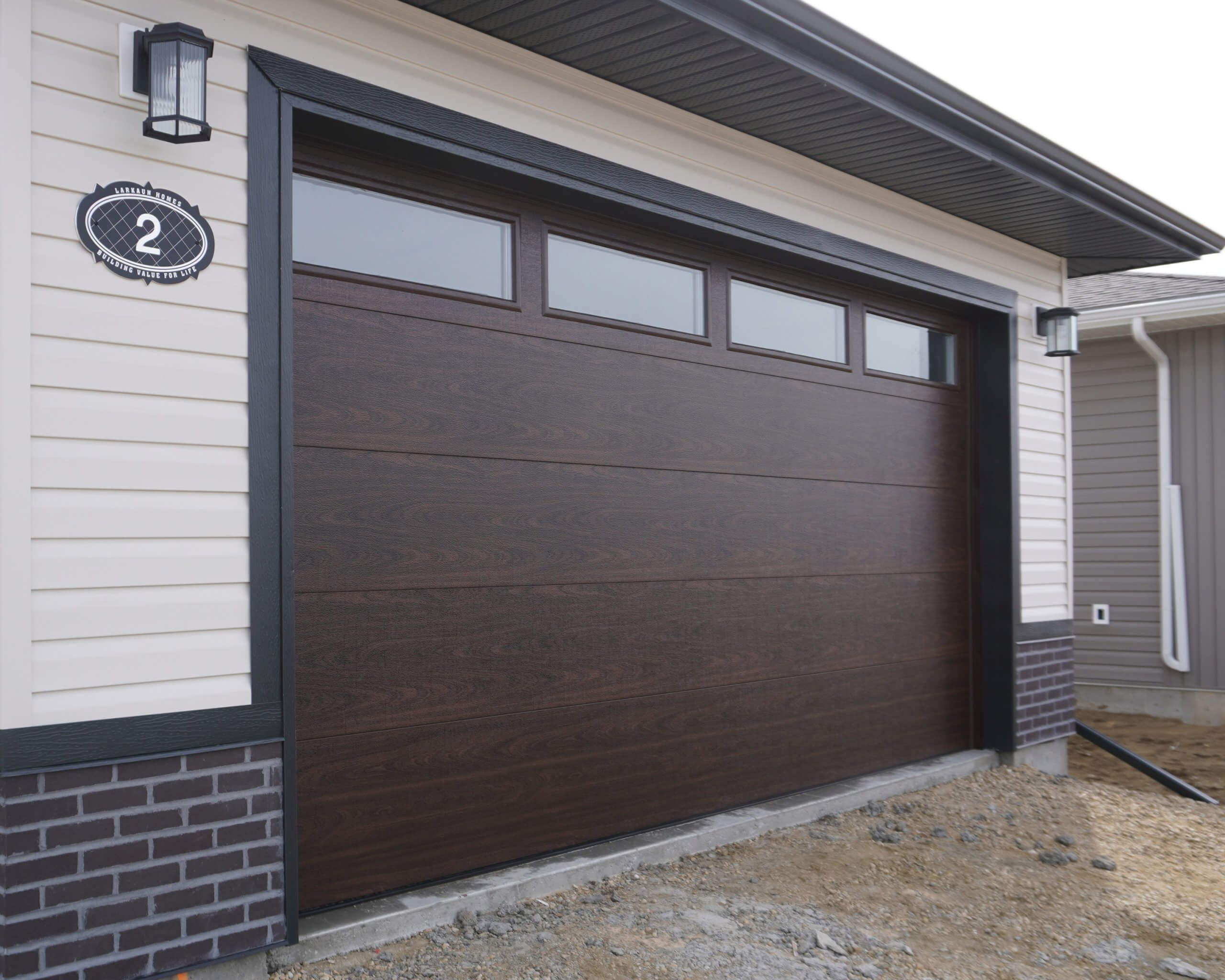
Photo courtesy of Direct Overhead Door Supply
From commercial to residential and vice versa
Like interest in polycarbonate making the journey from commercial buildings to residences, Laprade says other features are trending similarly.
Aesthetics and smart technologies, popular in home applications are gaining interest in the commercial world. On that note, black has become “a very strong colour in the market,” as with digital imprints creating wood-like textures. “From the curb, you’d think it was a wood grain,” Laprade says.
As technology innovations improve in one area, they open the door to adoption in another. Laprade recalls how his company overcame a unique challenge that fire halls were having — namely the tops of rushing firetrucks hitting the bottom section of overhead doors — by using direct drive operators and installing four-fold doors vertically.
The key is, of course, the right overhead door to meet your specific style and needs. —

Photo courtesy of Creative Door Services Ltd.
